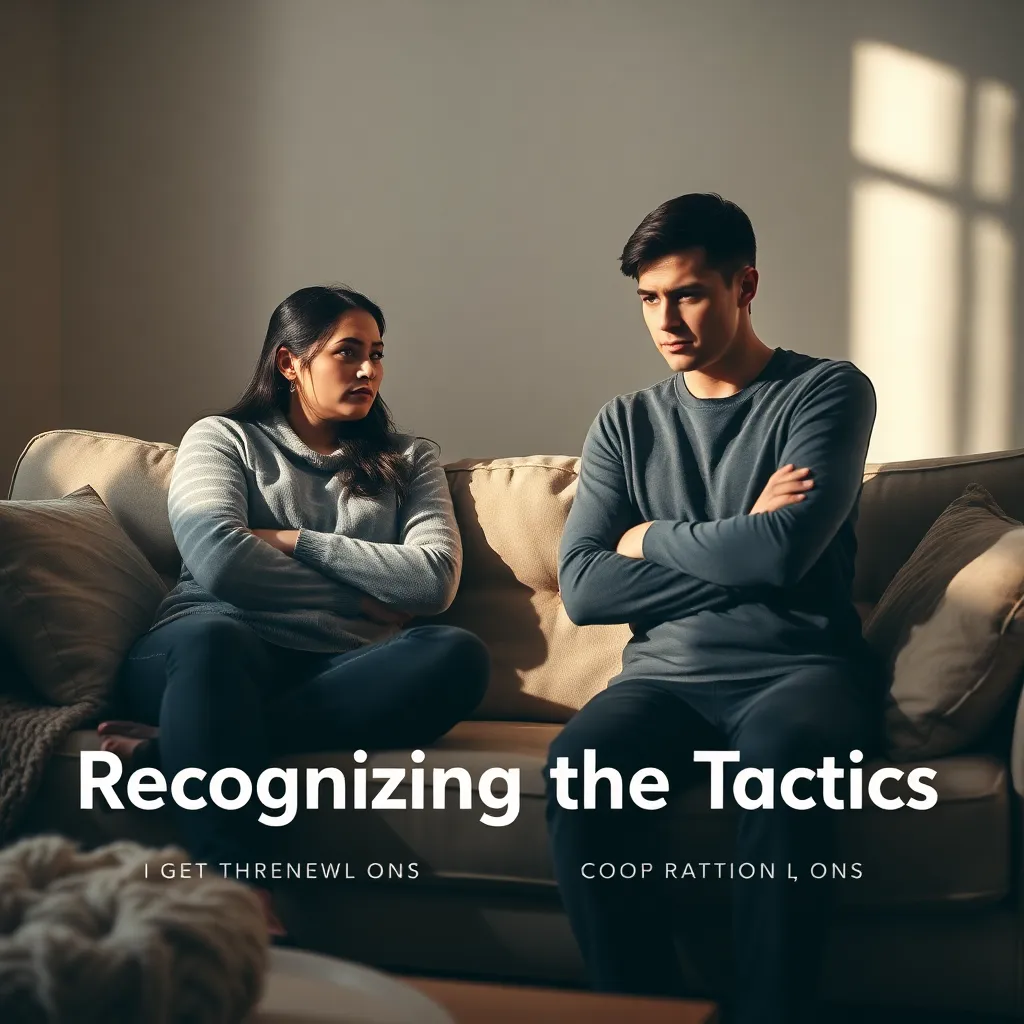Navigating a relationship with a covert narcissist can feel like walking a tightrope, where each step is met with uncertainty and confusion. It’s not uncommon to find yourself questioning your perceptions and feelings, wondering if you’re the one at fault for the turmoil that seems to surface without warning. Understanding the subtle yet damaging tactics used by covert narcissists to justify their rage is crucial in reclaiming your sense of self and truth. These tactics are often masked in manipulative charm, making them difficult to recognize until the emotional damage is already done.
As you delve into this article, you’ll gain insight into the nuanced behaviors that covert narcissists employ to rationalize their anger and maintain control. This knowledge is empowering, providing you with the tools to identify these tactics and protect yourself from their harmful effects. By learning to spot these manipulations, you can start to break free from the cycle of blame and self-doubt that often accompanies these relationships. It’s about regaining your clarity and reinforcing your emotional boundaries.
In the coming sections, we will explore eleven specific tactics used by covert narcissists, each explained with clarity and empathy. Understanding these strategies will not only shed light on your experiences but also offer practical steps to address them with confidence and care. By the end of this article, our hope is that you will feel more equipped to navigate these challenging dynamics and safeguard your emotional well-being. Together, let’s embark on this journey of awareness and empowerment.
1. Understanding Covert Narcissism

Understanding covert narcissism is essential in recognizing its subtle but impactful presence in relationships. Covert narcissists often mask their self-centeredness with a facade of humility, making it challenging to identify their behaviors at first glance.
Imagine a partner who constantly seeks validation through passive means, such as fishing for compliments indirectly. This behavior can leave you feeling confused and wondering if you’re imagining the imbalance in the relationship.
Experts suggest that covert narcissists might express their narcissistic traits through passive-aggressiveness rather than overt arrogance. They may appear sensitive and introspective, yet their actions reveal a deeper need for admiration and control.
In real-world scenarios, you might find yourself apologizing for things you didn’t do, as the covert narcissist subtly shifts blame to maintain their sense of superiority. Recognizing these patterns early can help you set healthier boundaries in the relationship.
2. Identifying Hidden Manipulation Tactics

In relationships, it can be challenging to spot the subtle signs of a partner’s covert narcissism. Often, these individuals employ hidden manipulation tactics that are not immediately obvious, leaving you feeling confused and questioning your own perceptions.
A common tactic is the use of passive-aggressiveness to express their rage without direct confrontation. For instance, they might give you the silent treatment or make sarcastic comments that undermine your confidence, all while maintaining a facade of innocence.
Another manipulation method involves gaslighting, where they make you doubt your reality. They might insist that your memory of a particular event is incorrect, or accuse you of being overly sensitive when you point out their hurtful behavior.
Look out for victim-playing, where they twist situations to make themselves appear as the wronged party. This tactic not only shifts blame but also garners sympathy from others, making it harder for you to address the real issues.
By becoming aware of these tactics, you can better protect yourself emotionally and set healthy boundaries. It’s important to communicate openly and seek support from friends or a therapist if you feel overwhelmed.
3. Unpacking Justifications for Rage

In relationships with covert narcissists, it’s crucial to recognize how they often use seemingly logical explanations to justify their outbursts. They may claim that their rage is simply a reaction to being misunderstood or mistreated, making their partner feel like the guilty party.
Consider a scenario where a covert narcissist lashes out after a simple disagreement about dinner plans. They might argue that their anger stems from feeling unappreciated, thus shifting the focus away from their own unreasonable behavior.
This dynamic can leave partners feeling confused and questioning their own actions. By framing their rage as a result of external circumstances, the narcissist effectively avoids responsibility for their own emotional responses.
Experts suggest that understanding these justifications can help individuals set healthier boundaries. Recognizing these patterns allows partners to see through the facade and address the real issue—unhealthy communication.
Ultimately, seeing through justifications for rage is about reclaiming your own emotional clarity. By doing so, you empower yourself to respond with empathy without compromising your well-being.
4. Playing the Victim Card

Covert narcissists often project themselves as being in a state of constant victimhood, which can be quite confusing. When they play the victim card, they twist scenarios to make it seem like the world is unjustly against them, using this narrative to justify any outburst or rage.
Imagine a partner who constantly feels slighted by the smallest things, like a forgotten text or a change in weekend plans. They might accuse you of neglect or intentional hurt, turning the situation around to focus on their perceived pain rather than addressing the issue calmly.
In relationships where one partner frequently plays the victim, it can be emotionally exhausting for the other party. You may find yourself constantly reassuring them or walking on eggshells to avoid further conflict, which can create an imbalanced dynamic.
Psychologists suggest that recognizing this behavior is the first step toward change. Effective communication and setting boundaries can help in managing such situations, ensuring that both partners feel heard and respected.
Ultimately, being aware of this behavior allows you to approach the relationship with more empathy and clarity. By addressing the root causes of such patterns, partners can work together towards a more balanced and fulfilling connection.
5. Twisting Reality for Sympathy

In the intricate dance of relationships, a covert narcissist might employ tactics that subtly distort reality to gain sympathy. They might recount events in a way that minimizes their role and amplifies any perceived injustices against them. For instance, after a disagreement, they may narrate the situation to friends, portraying themselves as the misunderstood hero, while their partner becomes the villain. This manipulation not only garners sympathy but can also isolate the partner, who may feel that the world is being turned against them.
Another aspect of this reality-twisting is their tendency to reinterpret past events. They might bring up past arguments and subtly shift the details to make themselves appear more reasonable and their partner more irrational. By distorting these memories, they gather emotional ammunition to justify their current anger or resentment. This tactic can leave partners questioning their own recollections and doubting their perspective.
Relationships thrive on mutual understanding and trust, yet a covert narcissist may use confusion as a tool to undermine these foundations. When confronted, they might accuse their partner of being overly sensitive or imagining things, effectively shifting the focus away from their own behavior. This can create a cycle where the partner is constantly trying to justify their feelings, often leading to an emotional drain. Recognizing this pattern is key to breaking free from its hold.
Ultimately, maintaining a grip on your own reality is crucial when faced with such tactics. Validating your experiences and seeking support from trusted friends or a therapist can empower you. By doing so, you not only protect your emotional well-being but also pave the way for healthier relationship dynamics in the future.
6. Using Silent Treatment Tactics

Another tactic often used by covert narcissists is the silent treatment, a strategy that can leave partners feeling confused and isolated. Imagine being in a relationship where, after a minor disagreement, your partner suddenly stops speaking to you without explanation. This approach is not just about withholding words; it’s about wielding silence as a weapon. The silence creates a power imbalance, forcing the other person to dwell in uncertainty and emotional distress.
Being on the receiving end of silent treatment can feel like navigating a maze with no clear exit. Your partner might not respond to your attempts at communication, leaving you questioning your actions and worth. In such a scenario, the non-verbal message is loud and clear: you are to blame, and it’s up to you to make amends. This behavior often justifies their rage by making you feel responsible for the emotional distance.
The impact of the silent treatment extends beyond the immediate conflict, often causing long-term emotional damage. Relationships thrive on communication, and when one partner resorts to silence, it breeds resentment and mistrust. It’s important to recognize this tactic for what it is—a form of emotional manipulation. Seeking to understand the underlying issues through open conversation can help dismantle the power dynamic.
Remember, the silent treatment is a reflection of the covert narcissist’s inability to handle conflict healthily. Taking steps to protect your emotional well-being is crucial for maintaining your self-esteem and sense of self-worth. By recognizing and understanding these behaviors, you can start to reclaim your voice and foster healthier communication patterns in your relationships.
7. Blame-Shifting and Projection

In many relationships, you might encounter moments when a partner tries to shift the blame during a disagreement. Covert narcissists often use this tactic to avoid taking responsibility for their actions, redirecting the focus to their partner instead. This behavior can leave you feeling confused and guilty for something that wasn’t your fault. It’s essential to recognize this pattern and understand that the issue isn’t about you.
Projection is another common strategy used by covert narcissists when justifying their rage. By accusing others of their own behaviors or feelings, they deflect attention from their shortcomings. For instance, a partner might accuse you of being selfish when they’re the ones acting in self-interest. Seeing through this tactic requires you to stay grounded and confident in your perceptions.
Imagine a scenario where your partner suddenly accuses you of neglect, despite your constant efforts to maintain the relationship. This is a classic example of blame-shifting, where your partner tries to make you responsible for their dissatisfaction. In such situations, it’s crucial to calmly address the actual issues and not get sidetracked by misplaced blame. Keeping communication open and honest can help you navigate these challenges.
Ultimately, understanding these tactics can empower you to protect your emotional well-being. By recognizing blame-shifting and projection, you can decide how to respond rather than react impulsively. This awareness not only helps you maintain your self-esteem but also strengthens your ability to set healthy boundaries. Remember, the key is to stay true to yourself and not be swayed by unjustified anger.
8. Gaslighting for Control

In the complex dance of a relationship, a covert narcissist often uses gaslighting as a tool for control. This insidious tactic involves making their partner doubt their own perceptions and reality, causing a spiral of confusion and self-doubt. Picture a scenario where you confront your partner about a hurtful comment, and they respond by saying, “You’re remembering it wrong” or “You’re just too sensitive.” Such responses can leave you feeling lost in your own reality.
Gaslighting often manifests in seemingly innocuous ways, making it harder to identify. A covert narcissist may frequently dismiss your feelings or reinterpret events to suit their narrative. For example, if you express discomfort about their behavior, they might twist the conversation to make it seem like you’re overreacting. This tactic not only shifts the blame but also reinforces their control over the relationship.
Experts believe that gaslighting can be so subtle that it often goes unnoticed until the emotional damage has been done. According to Dr. Ramani Durvasula, a clinical psychologist, “It’s about creating a sense of psychological instability.” This statement underscores the importance of maintaining a strong sense of self-awareness. Recognizing these patterns of manipulation is crucial to maintaining your emotional health and autonomy.
In navigating these challenging dynamics, it’s essential to foster open communication with trusted friends or a therapist. They can provide an objective perspective and affirm your reality, breaking the cycle of manipulation. Remember, the goal is to reclaim your agency and emotional well-being, ensuring your relationship remains a source of support rather than insecurity.
9. Creating False Narratives

Covert narcissists often engage in the tactic of creating false narratives to justify their rage, a subtle but powerful manipulation tool. This involves them rewriting reality to suit their needs, often leaving their partners feeling confused and doubting their own experiences.
Imagine a scenario where a partner consistently blames you for things that never happened or distorts past events to make it seem like you are at fault. This is a classic example of how a narcissist can twist the truth to maintain control, often causing you to question your own memory or sanity.
Experts suggest that this behavior stems from a deep-seated need to protect their own fragile self-esteem. By constructing a narrative where they are the victim and you are the villain, they can avoid facing their own shortcomings and maintain their internal sense of superiority.
An effective way to handle this is by maintaining a journal of events and communications. Documenting interactions and facts can help you stay grounded in reality and provide clarity when false narratives arise.
In any relationship, it’s crucial to stay connected to your own truth and experiences. By recognizing and challenging false narratives, you empower yourself to maintain healthy boundaries and cultivate a more balanced partnership.
10. Feigning Innocence to Evade

Stepping into the shoes of a covert narcissist, it’s not uncommon for them to resort to feigning innocence as a tactic to evade accountability. They may present themselves as the victim in situations where their actions have caused harm, leaving others confused and questioning their own perceptions.
In relationships, this can manifest when one partner openly expresses their hurt, only to be met with the narcissist’s bewildered expressions and claims of misunderstanding. This tactic can effectively deflect the focus from their behavior, subtly shifting the burden back onto the partner to prove the wrongdoing.
One might witness such scenarios unfolding at family gatherings, where a covert narcissist dismisses their outbursts as mere jokes, leaving others feeling overly sensitive. By painting themselves as innocent and misunderstood, they cleverly weave a narrative that justifies their outbursts and manipulations.
It’s crucial to recognize these patterns and not be swayed by their feigned innocence. Engaging in open, honest communication and setting clear boundaries can help in maintaining clarity and emotional safety.
Ultimately, understanding this tactic enables you to respond from a place of empowerment rather than confusion. By acknowledging these behaviors, you can protect your emotional well-being and foster healthier interactions.
11. Counteracting Narcissistic Rage

Understanding how to effectively respond to a covert narcissist’s rage involves cultivating self-awareness and emotional resilience. It’s important to recognize that their anger often stems from a place of deep insecurity and a need for control, not necessarily from anything you’ve done wrong.
In real-world scenarios, you might find yourself being unfairly criticized or blamed for minor issues. Instead of reacting defensively, try acknowledging their feelings without accepting unjust blame, which can help de-escalate the situation and protect your emotional well-being.
Experts suggest maintaining healthy boundaries to safeguard your mental health when dealing with narcissistic rage. Setting clear limits on acceptable behavior can prevent you from being drawn into their cycle of anger and manipulation, allowing you to stay grounded and focused.
Another practical approach is to limit the amount of time and energy you spend engaging with their rage. Redirecting conversations to solutions rather than arguments helps to maintain a peaceful environment and reduces stress.
Ultimately, maintaining your own emotional health is crucial when counteracting narcissistic rage. By prioritizing self-care and understanding your needs, you empower yourself to navigate these challenging situations with empathy and strength.
Conclusion: Creating Beautiful Outdoor Spaces
In exploring the 11 tactics covert narcissists employ to justify their rage, we delved into manipulation, projection, silent treatment, guilt-tripping, feigned victimhood, gaslighting, blame-shifting, trivializing emotions, strategic withdrawal, passive aggression, and conditional love. Recognizing these behaviors is crucial for safeguarding emotional well-being and nurturing healthier relationships. As an actionable next step, take a moment to reflect on any personal interactions that may have involved these tactics. Consider discussing your observations with a trusted friend or counselor to gain clarity and support.
To ensure you can revisit these insights whenever needed, save or bookmark this article as a valuable resource in navigating complex relationship dynamics. By staying informed and aware, you’re taking proactive steps toward fostering fulfilling, respectful, and authentic connections. Remember, understanding these patterns is the first stride toward cultivating an environment of mutual respect and love. With dedication and mindfulness, a future of relationship success is within your reach. Embrace the journey with confidence and compassion, knowing that you are equipped to create and maintain healthy, empowering relationships.
